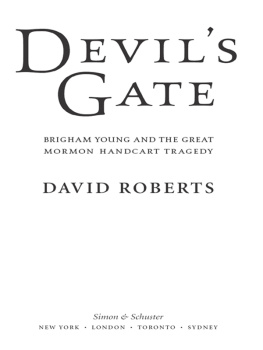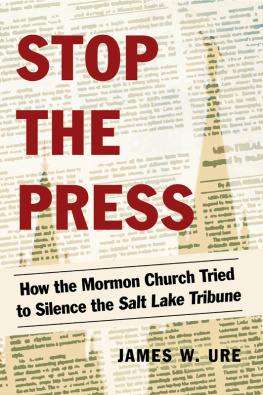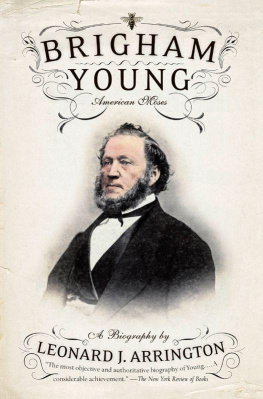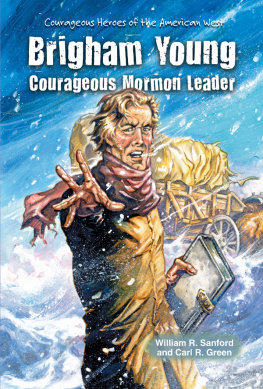ALSO BY DAVID ROBERTS
No Shortcuts to the Top: Climbing the Worlds 14 Highest Peaks
(with Ed Viesturs)
Sandstone Spine: Seeking the Anasazi on the First Traverse
of the Comb Ridge
On the Ridge Between Life and Death: A Climbing Life Reexamined
The Pueblo Revolt: The Secret Rebellion That Drove the Spaniards
Out of the Southwest
Four Against the Arctic: Shipwrecked for Six Years at the Top
of the World
Escape From Lucania: An Epic Story of Survival
True Summit: What Really Happened on the Legendary Ascent
of Annapurna
A Newer World: Kit Carson, John C. Frmont, and the Claiming
of the American West
The Lost Explorer: Finding Mallory on Mount Everest (with Conrad Anker)
Escape Routes: Further Adventure Writings of David Roberts
In Search of the Old Ones: Exploring the Anasazi World of the Southwest
Once They Moved Like the Wind: Cochise, Geronimo, and the Apache Wars
Mount McKinley: The Conquest of Denali (with Bradford Washburn)
Iceland: Land of the Sagas (with Jon Krakauer)
Jean Stafford: A Biography
Moments of Doubt: And Other Mountaineering Writings
Great Exploration Hoaxes
Deborah: A Wilderness Narrative
The Mountain of My Fear

Simon & Schuster
1230 Avenue of the Americas
New York, NY 10020
Copyright 2008 by David Roberts
All rights reserved, including the right to reproduce this book or
portions thereof in any form whatsoever. For information address
Simon & Schuster Subsidiary Rights Department,
1230 Avenue of the Americas, New York, NY 10020
SIMON & SCHUSTER and colophon are registered trademarks
of Simon & Schuster, Inc.
Library of Congress Cataloging-in-Publication Data
Roberts, David, date.
Devils gate: Brigham Young and the great Mormon handcart tragedy/
David Roberts.
p. cm.
Includes bibliographical references and index.
1. Mormon pioneersWest (U.S.)History19th century. 2. Mormon
handcart companiesHistory19th century. 3. MormonsMigrations
History19th century. 4. DisastersWest (U.S.)History
19th century. 5. Overland journeys to the Pacific. 6. Frontier and pioneer
lifeWest (U.S.) 7. Young, Brigham, 18011877. 8. Mormons
West (U.S.)Biography. I. Title.
F593.R54 2008
978'.02dc22 2008002286
ISBN-13: 978-1-4165-8035-5
ISBN-10: 1-4165-8035-2
All photographs not otherwise credited are by David Roberts.
Visit us on the World Wide Web:
http://www.SimonSays.com
For Sharon,
with love,
in this season of loss
CONTENTS


D EVILS G ATE
U p to that point, for Patience Loader, the journey had been chiefly exhausting. During the four weeks from July 25 to August 22, 1856, the company with which she traveled had covered 270 miles of trail from Iowa City to Florence, a fledgling community six miles north of Omaha, which itself had been founded just two years earlier. Averaging ten miles a day, the party of pioneers, some 575 strong, suffered the occasional delay due to thunderstorms or wayward cattle, but kept up their spirits with prayer services in camp each night and songs upon starting off each morning.
Yet even as the emigrants approached Florence, the trek, for twenty-eight-year-old Patience, took on an ominous new cast. Her fifty-seven-year-old father, James Loader, had been growing weaker by the day. Now his legs and feet swelled so badly that he had trouble walking. He was too feeble to help erect the big canvas tent under which twenty pilgrims slept wrapped in blankets on the ground. After mid-August, as he went to bed each night, James wondered whether he would be able to travel at all on the morrow.
Patience, her father, her mother, four of her younger sisters, and a younger brother were eight of some 1,865 Mormon emigrants engaged in what historians LeRoy and Ann Hafen call the most remarkable travel experiment in the history of Western America. The Loaders and their fellow sojourners were traveling overland from eastern Iowa across the crest of the Continental Divide to Utah. The last four-fifths of that 1,300-mile trail, from Florence onward, had been traversed (though not blazed, for thousands of settlers bound for Oregon and Californiaincluding the ill-starred Donner partyhad preceded them) by Brigham Youngs pioneer company of Mormons, who in 1847 had founded their new Zion on the site that would become Salt Lake City.
In 1856, however, the emigrants were not traveling, as Brigham Youngs party had, in covered wagons pulled by oxen. Instead, they were serving as their own beasts of burden. From Iowa City all the way to Salt Lake City, they pulled and pushed wooden handcarts freighted with three months worth of clothing, gear, and sometimes food. A few ox-drawn wagons accompanied the handcart train: in Patience Loaders company, along with 145 handcarts, there were eight wagons to carry the heavy tents, miscellaneous gear, and much of the food. The wagons could also serve in extremis to carry a pioneer who was too weak or ill to walk.
The handcart experiment was Brigham Youngs idea. Complicated factors lay behind its genesis, but the bottom line was economic. By 1856, Youngs virtually autonomous empire on the edge of the Great Basinthe self-proclaimed State of Deseretwas rife with fears of an impending invasion by the U.S. Army. Four years before, Young had gone public with a doctrine that had long been kept secret within the Mormon hierarchywhat the Church of Jesus Christ of Latter-day Saints (as the Mormons called themselves) referred to as plural marriage. Polygamy, in short, was not merely permissible in Utah: it was the sacred duty of every God-fearing Saint. Young and his Apostles (the chief officers of the Mormon theocracy) had lobbied in vain to have Utah admitted to the union as a state. That very year of 1856, John C. Frmont, the first Republican candidate for the presidency, had grounded his campaign on the pledge to rid the country of those twin relics of barbarismPolygamy and Slavery.
Deseret needed reinforcements. Meanwhile, thanks to nearly two decades of proselytizing so zealous there is no comparable achievement in American annals, missionaries sent to Great Britain and Scandinavia had converted thousands of the working-class poor to Mormonism. Not only to strengthen the colony, but to ensure the converts own spiritual salvation, Young determined to get those Saints to Zion as quickly as possible. And as cheaply as possiblefor Deseret was in the midst of a fiscal crisis. Handcart emigration, Brigham Young declared, could be accomplished even more easily than the usual trek by covered wagon, and at a fraction of the cost.
The handcart of 1856 was modeled on the kinds of luggage trolleys employed by railroad porters in the big cities of the Eastern United States. Its two wheels, about four and a half feet in diameter, were narrow hoops of wood, with thin wooden spokes radiating from the axle hub. The axle itself was made of hickory. The bed upon which the pioneers goods were carried was a shallow, open, rectangular box, a little less than three feet wide by five feet long. From the front of the cart protruded a simple yoke made of thin, rounded sticks; two persons could stand inside this yoke, grasp the crosspiece with both hands at chest level, and push the cart along.













